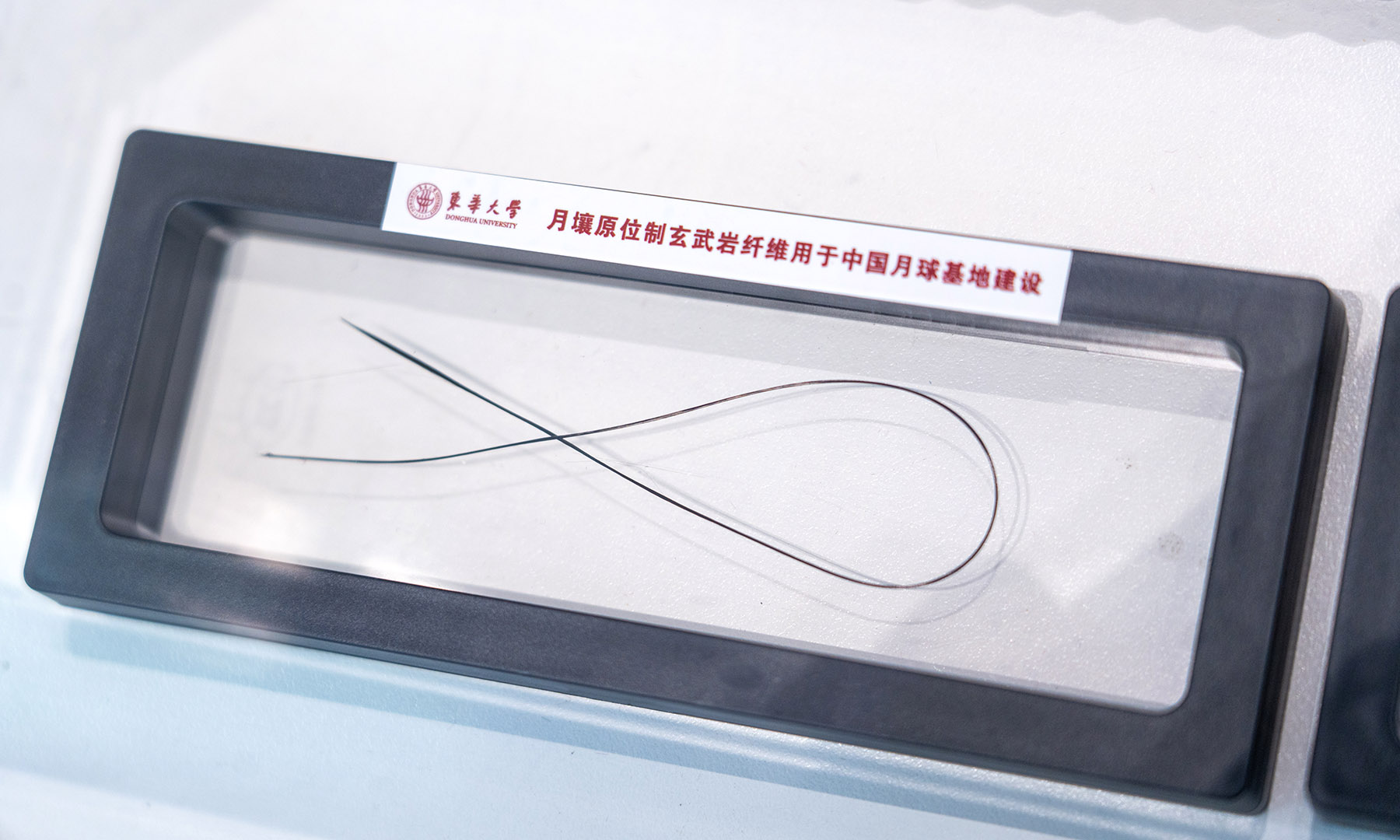
Donghua University in Shanghai has unveiled what is believed to be the world's first piece of equipment capable of converting lunar soil into high-performance fiber materials in a vacuum environment — a development researchers say could significantly advance lunar exploration.
Such fibers could be used to bolster construction of facilities on the moon.
The technological breakthrough was revealed last week at the 11th China (Shanghai) International Technology Fair.
READ MORE: China's space station delivers new samples for research
Designed to operate autonomously on the moon in unmanned, vacuum and low-gravity conditions, the equipment uses lunar soil as the sole raw material. Without the need for additives, it heats lunar soil powder to temperatures between 1,400 and 1,500 C, melts it into a syrup-like liquid and then draws ultrafine fibers — much thinner than a human hair — using vacuum traction and high-speed spinning technology.
Wang Qingwei, a professor at Donghua University and a member of the State Key Laboratory of Advanced Fiber Materials, said the team began conducting research on lunar soil in 2021 and accelerated efforts after receiving 500 milligrams of soil samples collected by the Chang'e 5 mission in September last year.
Due to the limited amount and unique composition of lunar soil — which differs greatly from Earth soil — the team used Earth soil to create simulated lunar materials for experimentation.
Wang said Donghua's achievement stands out internationally, noting that no existing system elsewhere has been able to autonomously produce such fibers in a complete vacuum environment.
ALSO READ: China fully advances manned lunar landing program
The technology is expected to play a key role in future moon missions, especially the construction of a China-led lunar base in the 2030s. Building a base on the moon requires large quantities of construction materials, which would be costly and logistically challenging to transport from Earth.
"This equipment will allow us to use raw materials sourced directly on the moon to construct buildings," Wang said. "The fibers drawn from lunar soil can be used to reinforce those structures, making them more resistant to collapse during frequent moonquakes."
He added that once a base is established, the fiber-producing equipment could work in tandem with smaller devices — including 3D printers, looms and textile machines — to process the fibers into fabric, composite materials and household items such as cloth and vessels.
Contact the writer at wangxin2@chinadaily.com.cn


